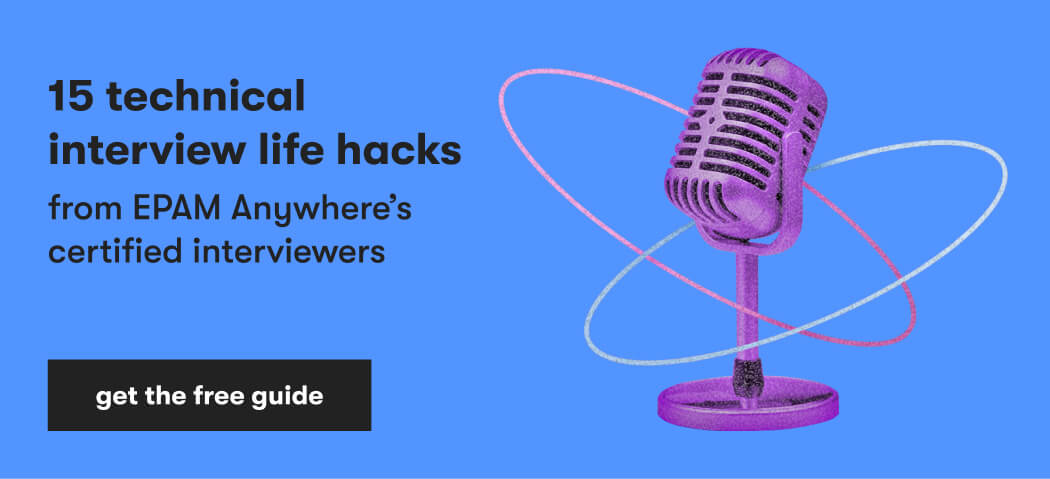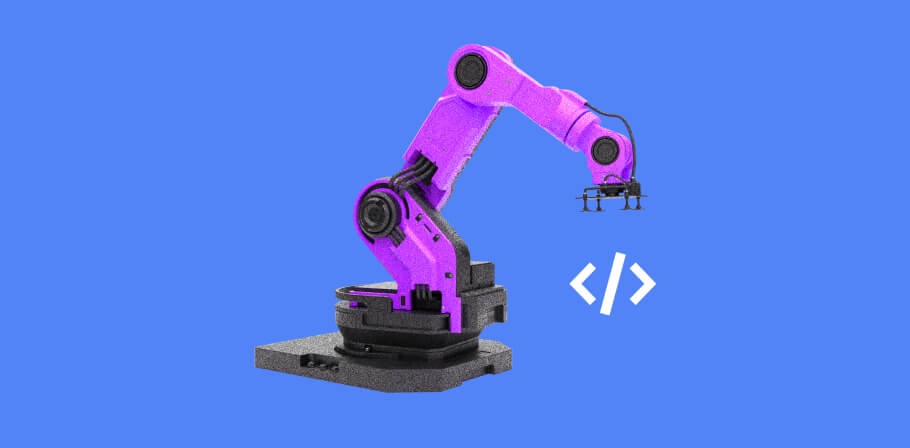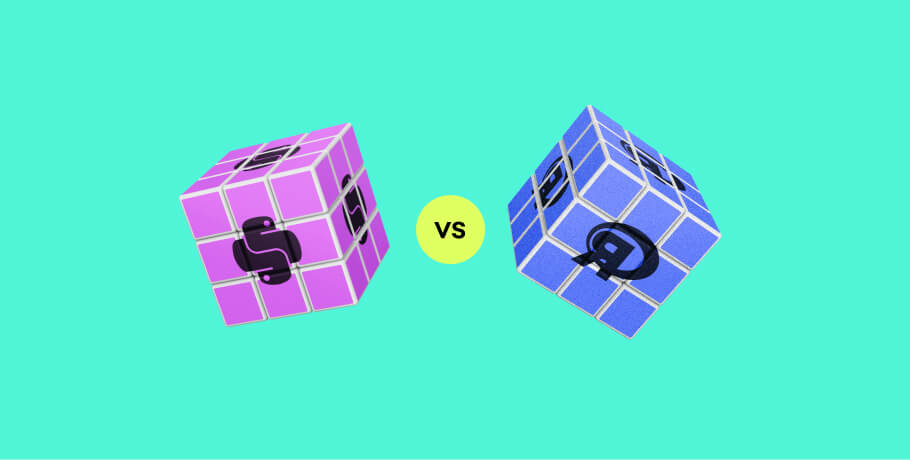Testing software is one of the most important aspects of software engineering. An application that hasn’t been tested thoroughly is prone to many bugs and errors. A QA automation engineer makes sure that every system works as expected by conducting quality assurance with automation tools, and by defining standards, procedures, and methods.
Below is a list of Python automation testing interview questions you are likely to encounter, along with a few sample answers.
ready to make your next career move?
Send us your CV and we'll get back to you with a matching test automation job at EPAM Anywhere
Python automation testing interview questions and answers about fundamentals
First, you’ll be asked to explain how experienced you are in software automation testing in general. After that, the technical interviewer will go on checking your practical knowledge of software quality assurance fundamentals and Python automation testing tools.
What is the difference between a test plan and a test strategy?
A test plan is a document that defines the approach, resources, scope, deliverables, objectives, estimation, schedule, etc. of testing activities. A test strategy is a set of principles or guidelines explaining test design and the determination of how testing should be done.
What is a flaky test and how do you work with one?
A test is considered “flaky” if it cannot produce the same result every time it is run without any changes in the code under test or the testing configuration. For example, let’s assume that Test 1 relies on some global configuration. Now we write Test 2 that changes this global configuration, and Test 1 fails. In this scenario, Test 1 is an example of a flaky test.
When do you use fixtures?
We use fixtures in testing to make sure there is a fixed configuration (or environment) for the tests so they can run multiple times. One good example of a testing fixture is to initialize a database with specific credentials for testing.
What is parameterizing?
Parameterizing is running the same test (the same test function) with multiple parameters (inputs) several times. For example, you want to test your function ‘mult’ that takes 2 numbers and multiplies them. Using test parameterization, we can feed inputs like (1, 4), (-1, 0), (‘string’, 3), (True, 12), (None, -1), ({}, (1,)) into our test to make sure our ‘mult’ can handle many edge cases.
What is parallel testing?
Parallel testing, or parallelism, is running a set of tests at the same time. These sets of tests can have the same or different configurations. The main purpose of parallel testing is to reduce execution time.
Describe the architecture of TAF
TAF (Testing Software Automation Framework) is a system that determines guidelines and principles for the automation testing of a product. The main usage of TAF is to ensure faster test cycle times and accelerate the CI.
Why do we need test documentation?
Test documentation is a set of artifacts prepared before testing. It includes test coverage, terminology, execution process, and all testing activities that need to take place. Test documentation is important as it shows us what part of our project is crucial and how to test it. It also helps teams to improve, verify, plan, review, and understand the tests (and testing processes) much better. This leads to a clear understanding of the project goals.
What are some popular Python testing libraries?
A few of the most popular Python libraries for testing include Robot, pytest, Selenium, and unittest.
What are the differences between CI, CD, and CT?
- CI (Continuous Integration): The process of continuously integrating the code into our codebase.
- CD (Continuous Delivery or Deployment): The automated pipeline of the entire software release. For example, when someone wants to deploy to the dev environment, this pipeline ensures that tests are passed, the code is reviewed and approved for deployment, and the only remaining step is to deploy.
- CT (Continuous Testing): This allows engineers to conduct deployment and post-deployment testing in some (local) environments. We can also say that CT runs tests after each commit.
The main reason to implement these processes is to increase productivity, efficiency, velocity, and reliability.
What are QGs?
GQs (Quality Gates) can be defined as a milestone for a project that includes several important criteria. If these criteria are not met, the project cannot continue to the next step.
What is REST and how do you test an API?
REST is an acronym for REpresentational State Transfer, and it is an architectural style. There are different Python packages that you can use to test an API in Python, such as pytest, VCR.py, etc.
What is the OSI model and its layers?
The Open Systems Interconnection (OSI) model contains seven layers that computers use to communicate over a network:
- Physical Layer is responsible for the actual physical connection between the devices and contains information in the form of bits.
- Data Link Layer is responsible for delivering messages from one network node to another.
- Network Layer is responsible for the data transmission from the current network host to another host (in a different network). Moreover, this layer handles the routing of packets.
- Transport Layer receives the data transferred in the session layer, breaks it into “segments,” and delivers it to the network layer.
- Session Layer establishes communication channels between devices. It also takes care of authentication and security.
- Presentation Layer prepares (manipulates) data for the application layer.
- Application Layer is used by the end-user software.
What is the difference between TCP and UDP?
TCP (Transmission Control Protocol) is a connection-oriented protocol that establishes a connection to transfer data and must be closed once the transmission is done.
UDP (User Datagram Protocol) is a connectionless protocol, meaning it doesn’t require establishing, maintaining, or terminating a connection, and therefore it is much faster than TCP.
Python test automation interview questions for experienced engineers
If you’ve applied for a mid-level or senior Python test automation engineer position, then you’re going to be asked more in-depth Python interview questions for automation testing, as well as some behavioral ones.
Define generators, context managers, decorators, and multiple inheritance in Python Core
- Generator functions are those having one or more ‘yield’ statements that return an iterator (that we can iterate over).
- Context Manager is used to set up resources, like opening a connection or a file. It automatically handles the clean-up (for example, closing the connection or the file) when we are finished.
- Decorator is a function used to add new functionality when wrapping a class or a function without having to change its structure.
- Multiple inheritance is when a class can inherit from more than one class.
What’s the difference between coroutine and generator?
Coroutines are like generators in the way their execution can be started, suspended, or restarted. The main difference between a coroutine and a generator is that generators generate values while coroutines consume them.
What do you use Appium for?
Appium is one of the most popular open-source frameworks that we can use for automated mobile testing. It drives iOS, Android, and Windows apps. The main idea behind Appium is that we don’t need to include an SDK or recompile the app for testing our native apps.
What are PEP standards?
PEP (Python Enhancement Proposals) are conventions for writing code in Python, for example:
- PEP 8: This is a style guide for Python code, such as using 4 spaces per indentation level.
- PEP 257: This PEP documents the semantics and conventions regarding Python docstrings.
- PEP 484: Introduces statically typing in Python, i.e:
What are some key software engineering principles and patterns?
Some of the most important software engineering principles are:
- DRY (Don't Repeat Yourself) aims at decreasing code repetition.
- YAGNI (You Aren't Gonna Need It) states that we must add features when they are necessary.
You can also provide definitions for the following groups of architectural patterns:
- Creational patterns provide different mechanisms to create objects while abstracting away the class’s internal implementation.
- Behavioral patterns identify the common communication patterns between objects so they can easily talk to one another while being loosely coupled.
- Structural patterns explain how to combine the classes and objects into larger flexible and efficient structures to meet multiple goals.
How do you usually estimate tasks?
When estimating tasks, we must consider factors like the required steps, the dependencies for the steps, the number of people who need to be involved, the project risks, quality of architecture, etc. For example, Fibonacci Agile Estimation is a way of assigning points to the stories in the Agile system.
You are overloaded with tasks and you spot a critical bug. What should you do?
This is one of the typical behavioral Python interview questions for test automation engineers that gauges your professional strategies.
My answer would be the following: in case the bug is critical, I prefer to resolve it immediately. For example, if there is a bug in the code for a billing system that makes all the transactions fail, that bug must be resolved as soon as possible. But if the bug is not that crucial (like a UI change on a page that not many people visit), then I report the bug.
Imagine you are on a new project and are asked to set up testing automation from scratch. How would you do that?
Applying the existing approaches is a good idea. Depending on the main development language, deployment strategy, project goals, time, team capacity, and architectural style, we can go for approaches like Monolith, Layered, Microservices, Event-Driven, etc. The layers can be Test Cases Layer, Domain Layer, and System Under Test. Unit tests can be created at the very beginning, and then the remainder will be created according to the test pyramid.
Explore testing automation jobs at EPAM Anywhere
Now that you’re prepped for a technical interview with these Python QA automation interview questions, browse our open jobs and apply for the one that catches your attention. We look forward to you joining us at Anywhere!

Explore our Editorial Policy to learn more about our standards for content creation.
read more


























